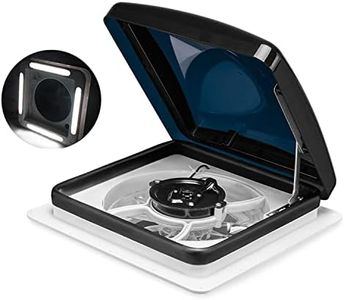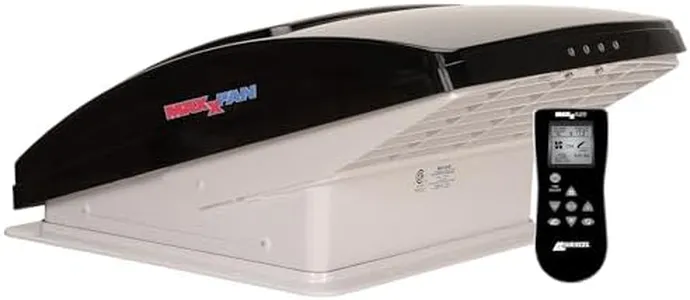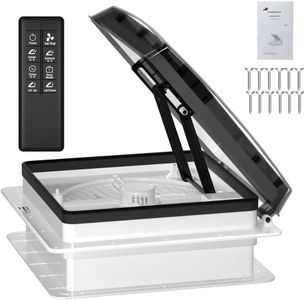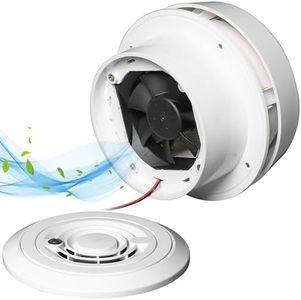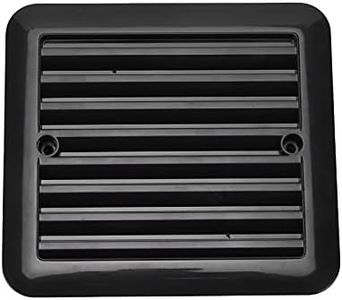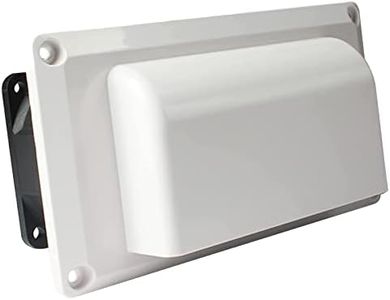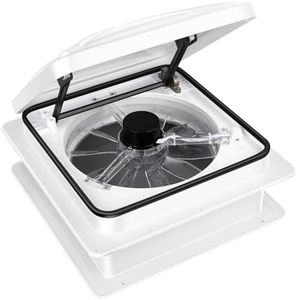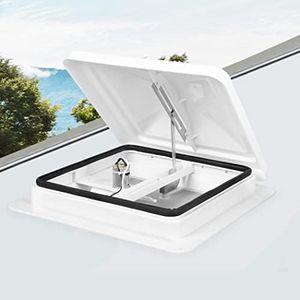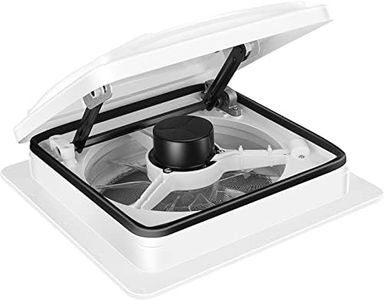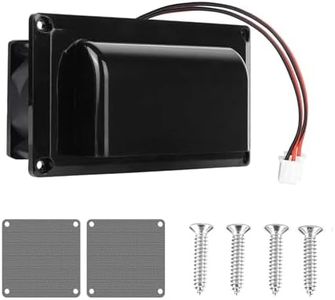We Use CookiesWe use cookies to enhance the security, performance,
functionality and for analytical and promotional activities. By continuing to browse this site you
are agreeing to our privacy policy
10 Best Rv Exhaust Fan
From leading brands and best sellers available on the web.Buying Guide for the Best Rv Exhaust Fan
Choosing the right RV exhaust fan is important because it directly impacts your comfort and air quality while on the road or parked for camping. A good exhaust fan helps remove hot air, humidity, and cooking odors, keeping your RV fresh and pleasant. While shopping for an RV exhaust fan, focus on understanding your unique needs: Are you spending time in hot climates? Do you cook frequently in your RV? Do you need a quiet unit for nighttime use? These answers will guide your decision-making process as you look at the key features of RV exhaust fans.Airflow (CFM)Airflow is measured in Cubic Feet per Minute (CFM) and tells you how much air the fan can move. This is important because higher airflow means the fan can clear out air and odors more quickly. Airflow values can generally be grouped into low (less than 600 CFM), moderate (600-900 CFM), and high (over 900 CFM). If your RV is compact or you mostly want to ventilate small spaces like the bathroom, a low airflow fan is often enough. For kitchens or larger RVs, or if you want to cool down your RV quickly, look for moderate to high airflow. Think about where the fan will be used and how much air needs to circulate to stay comfortable.
Noise LevelNoise level refers to how loud the fan is when operating, usually measured in decibels, but often described in general terms. This matters because some fans can be distracting or bothersome during sleep or conversations. Noise levels generally fall into quiet, moderate, and loud. If you’re sensitive to noise or plan on running the fan at night, opt for a quiet model. If the fan is only used briefly, like when cooking or showering, noise may not be as big of an issue. Analyze where and when you’ll use the fan most.
Fan SizeFan size typically refers to the diameter of the blades, often measured in inches. This impacts both the airflow and the fit within your RV’s available vent openings. Common sizes are 6, 10, and 14 inches. The larger the fan, the more air it can generally move. Decide based on your RV’s vent openings and your ventilation needs—smaller fans suit tight spaces, while larger fans are better for main living areas.
Manual vs. Automatic OperationSome exhaust fans require you to turn them on or off and open the vent manually, while others offer automatic controls, such as thermostats or rain sensors. This is important because automatic fans provide added convenience and can protect your RV from rain. Manual fans are simple and less expensive, suitable if you don’t mind adjusting them yourself. Automatic ones are ideal if you want the fan to operate based on temperature or weather, or if you tend to forget to close vents.
Power SourceMost RV exhaust fans run on 12V DC power, but some can use AC power or even offer dual modes. This matters so you can match the fan to the electrical system in your RV. If you mostly camp off-grid, 12V fans are usually easier on your battery. Make sure your RV wiring supports your chosen fan type. Let your camping habits and existing RV setup guide this choice.
Ease of InstallationEase of installation covers how simple it is to fit the fan into your RV’s existing vent opening and wire it up. Some fans are designed for straightforward DIY installation, while others may need professional support. If you’re handy and want to save on installation, look for models that fit standard RV vent sizes and offer clear instructions. If not, you might want to consider options that local RV service shops can easily handle.
Additional FeaturesSome RV exhaust fans offer extras like built-in lights, remote controls, reversible airflow (for both intake and exhaust), and covers for operation during rain. These features can add comfort and convenience. Think about whether you want a fan just for basic ventilation, or if you’d benefit from extras like lighting or remote operation. Your lifestyle and typical use will help you decide which, if any, features matter most to you.
